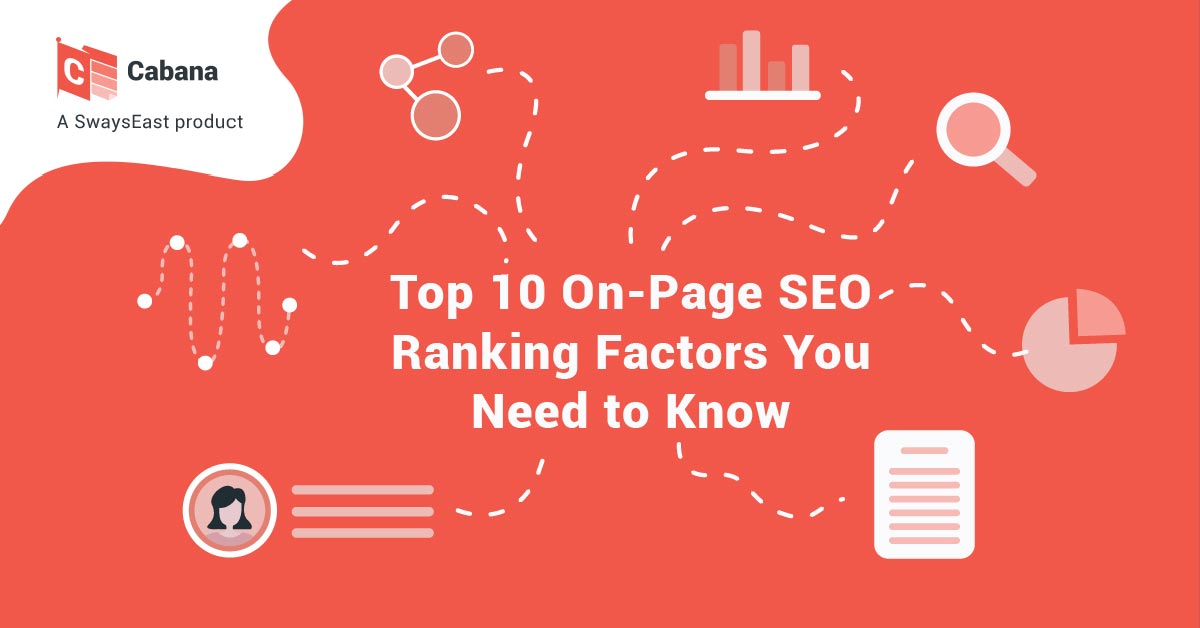SEO ranking refers to a website’s position on the search engine results pages (SERPs). On-page SEO is the practice of optimizing content to boost a webpage’s rankings on search engines and to earn organic traffic.
This guide will walk you through the top ten on-page SEO ranking factors that can help improve your content authority, traffic, and conversions.
1. E-A-T
This acronym stands for Expertise, Authoritativeness, and Trustworthiness. Google and other search engines use this framework to evaluate websites, web pages, and content creators.
With low quality content, there is less visibility; worse, websites with duplicate content and other Black Hat SEO techniques can result to penalization. Better rankings await high quality content. Whether correlation or causation, E-A-T plays a key role in Google’s organic search results – and should be a top priority in your on-page SEO strategy.
2. Title Tag
The title tag can be found in the head section of each webpage and in the browser window. This provides an initial idea or context of the webpage’s topic which is why it is also displayed prominently in the search engine results pages.
Make sure there are no duplicate, missing, or poorly written title tags. Though the title tag has a minor impact on organic rankings, it is best to optimize this element for better ranking on search engines.
3. Meta Description
Meta description provides the description of a webpage. This can be found below the page title in SERPs.
To create good meta descriptions, use researched, targeted keywords that:
- Communicate urgency, value, and relevance to readers
- Reflect exactly what the content is about; use different meta descriptions for different webpages
- Appeal to readers’ emotions and compel them to click on the link
Keyword-enriched meta descriptions improve search engine ranking but also lead to:
- Higher click-through rate due to succinct, reliable explanation of a webpage
- More user-friendly webpage appearance on the SERPs
- Happy users because they can find the most appropriate webpage faster
- Increased number of warm leads due to increased site visitors
- More social media visibility as this serves as an opportunity to promote the webpage
4. Headlines
Compelling headlines help website content perform better on search engines. Strategic headline creation can mean the difference between a click and an impression.
If headlines spark interests, these will stand out on the SERPs and encourage visitors to click through and read the rest on your site.
5. Header Tags
Header tags refer to HTML elements (H1 to H6) that differentiate headings and subheadings from other types of text within your content. By providing keyword-rich context about your webpages and making your content more interesting for visitors to read, it will help increase your ranking on search engines.
6. SEO Writing
SEO writing is the process of producing and optimizing content with the primary goal of ranking in search engines. Writing solid SEO content is simply more than just keyword research, content creation, and filling in the blanks; it means having both readers and search engines in mind.
Put another way, SEO writing = remarkable content + systematic on-page SEO. Achieve this by doing the following:
- Generate a topic list that your target audience cares about.
- Turn your topics into the right keywords.
- Outline content to match search intent.
- Write comprehensive, keyword-enriched content.
- Optimize all elements for clicks and link to high-authority external pages and resources.
7. Keyword Cannibalization
Keyword cannibalization is using too many similar keywords on multiple pages on your website. This makes it difficult for Google to discern which content to rank higher. To prevent this:
- Merge content into a single page
- Delete content or remove keywords
- Update content
8. Content Audit
Creating the latest content should always be up in the to-do list but this does not mean neglecting to audit existing content on the site. Content audit is equally important because it helps to:
- Determine the types of content being currently produced
- Identify whether the webpages still provide up-to-date information or not
- Evaluate if existing content is achieving its goals and generating revenue
9. Image Optimization
Webpages deliver more impact when images are added. But not all images are created equal – a large volume of unoptimized images can consume lots of bandwidth while loading and can cause your website to load slowly.
Image optimization will not just help with high ranking on search engines. This also results to faster page load time, better user experience, and higher conversion rate. Optimizing images can be done by:
- Choosing the right image file type
- Resizing and compressing images
- Using keyword-enriched image names
10. User Engagement
Improving website elements for better SEO ranking is only half the battle. A greater challenge is retaining engaged users. To increase user engagement:
- Use a straightforward & logical content/page structure
- Use different content types
- Enhance site responsiveness
- Enable interactive site search
- Implement internal linking & suggested products
- Use compelling CTAs that match the buyer’s journey
- Create custom 404 pages
On-page SEO is the key to increasing your website’s chances of showing up high in the search results. For data-driven content creation that will increase your team’s digital workflow and outperform competition, there’s Cabana to do all that and more. Get started for FREE.


